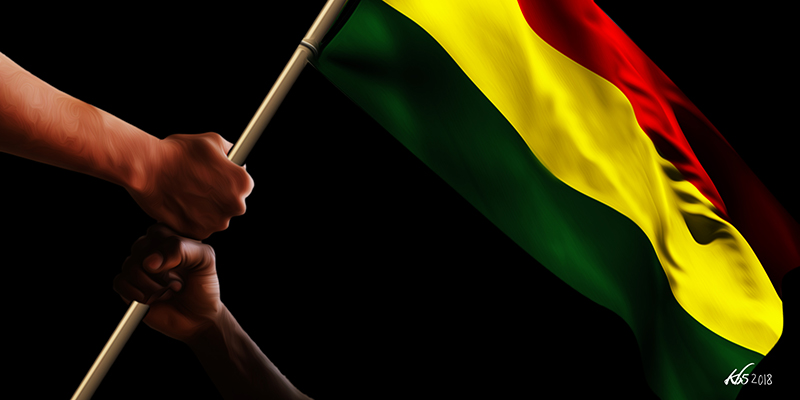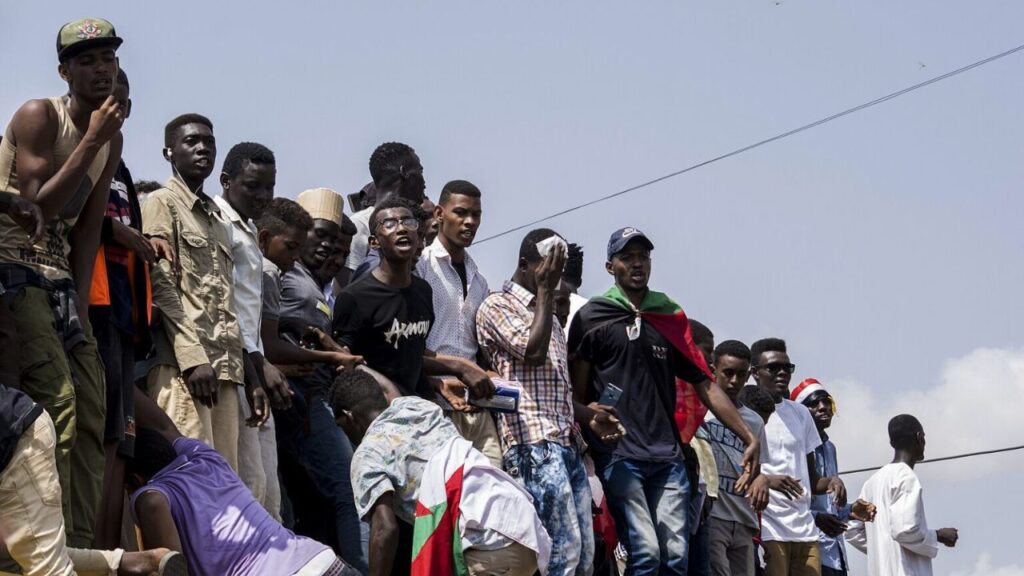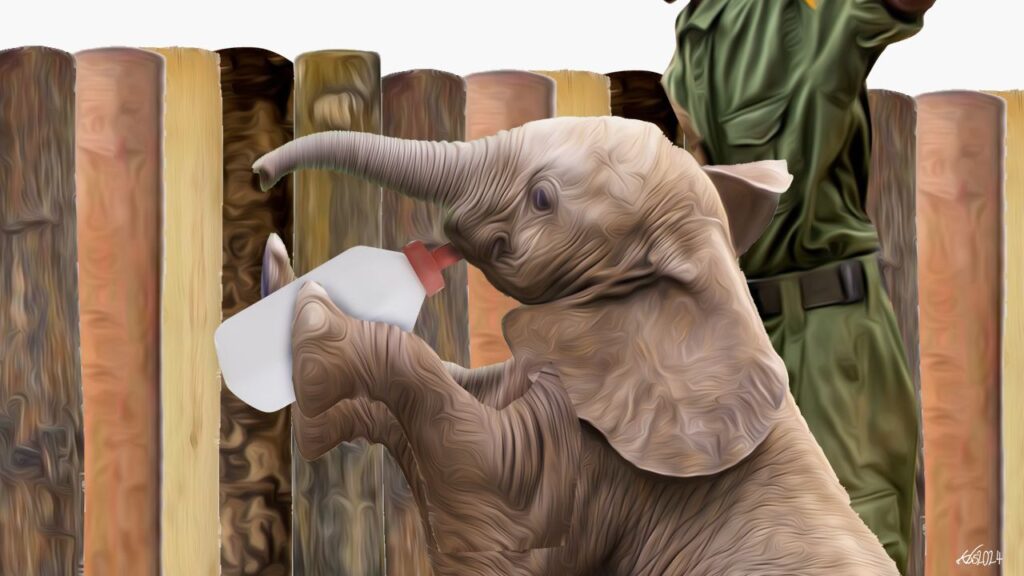The post Vasco da Gama epoch of some five centuries is a story of the ‘West and the Rest’. The West constructed its own story and the story of the Rest. It is a story of plunder, privation, invasion and destruction; it is a story of permanent wars and passing peace. It is a story of the annihilation of pre-European civilisations from the Incas of the Americas, so called after the European explorer Amerigo Vespucci, to the Swahili civilisation of the eastern coast of Africa.
The title of a book describing the Spanish conquest of Mexico, the near-extermination of the Tasmanian Aborigines by the British, the white American dispossession of the Apache, and the German subjugation of the Herero and Nama of Namibia, sums it all: Rivers of Blood, Rivers of Gold (Cocker 1999).
The tale of treasures at one end and tragedies at the other cannot be understood, I suggest, without locating it in the trajectory of worldwide capitalist accumulation. No doubt it is a complex story of construction and destruction of cultures and customs; a story of the exercise of brutal power and subtle politics; a spinning of epic mythologies and grand ideologies. No doubt it cannot be reduced mechanically to the capitalist mode of production nor explained in a vulgar way by theories of conspiracy or processes of economics. I am suggesting none of that.
Yet in this complexity and variability, in these major shifts and changing continuities—all of which we as scholars must study and have been studying—there is a pattern. There is a red thread running through it. That red thread is the process of capitalist accumulation seen in a longue durée. While we must, by all means, resist linear trajectories that essentialise the march of progress of so-called Western civilisation, including the stagiest periodisation of vulgar Marxists, we cannot surrender to agnosticism or eclecticism—that the world is not knowable and explainable, however approximately.
Periodising the Process of Accumulation
It is in the context of the trajectory of capitalist accumulation that I want to locate the genesis of the grand narrative of nationalism and Pan-Africanism. To facilitate my paper I am resorting to some periodisation of the process of accumulation. As we all know, all periodisation has its hazards—processes overlap and intermingle; the new is born in the garbs of the old and takes time before it is recognised as such, while the old persists beyond its usefulness.
Keeping that in mind, I am categorising the first four centuries (roughly from the last quarter of the fifteenth century to the first quarter of the nineteenth century) of the African encounter with Europe as the period of primitive accumulation, or, to use the more recent and generic term, accumulation by appropriation. (It should become clear later why I prefer this term.)
The period of accumulation by appropriation
Within this period we have two sub-periods. One is the period of looting of treasures, sometimes directly, sometimes indirectly, under the name of trade, based on unequal, rather than mutual exchange. This is the period when European powers pursued their singular mission to destroy pre-European long-distance trade— the trans-Sahara trade on the west coast and the Indian Ocean trade on the east coast of Africa—in order to establish their mercantile and maritime hegemony. The pre-European trade systems, both on the west and the east coasts, were governed by Islamic precepts. The gold trade passed through Timbuktu on the west, and through Kilwa on the east, both of which became centres of great Islamic civilisation and learning.
Timbuktu and Kilwa were brutally destroyed by Portuguese privateers. The expeditions had specific instructions to Christianise the ‘natives’ and eliminate Muslim traders.
As the Portuguese privateers were devastating the African coast in the last quarter of the fifteenth century, so Spanish conquerors were discovering the ‘New World’. Vasco da Gama laid the foundation of the European invasion of Africa; Christopher Columbus inaugurated the extermination of the indigenous populations of the Americas and the Caribbean—the first genocide and holocaust in the history of humankind. One led to white hegemony, the other to white settlement. From then on, the fate of the three continents was inextricably linked and found its immediate expression in the triangular slave trade.
The second sub-period, from the sixteenth to the nineteenth century, witnessed the gruesome Atlantic slave trade, the so-called triangular trade. Half the slaves were transported to the ‘New World’ in the eighteenth century. Millions—fifty million, one estimate says of men, women and children torn from their continent worked the sugar plantations of the Caribbean and cotton plantations of the southern states of America to provide the raw material for Lancashire mills, the pioneer of the Industrial Revolution. The African continent was looted of its treasures in the first sub-period, which also ruined its established mercantile routes. In the second sub-period, the continent was looted of its people, devastating its social fabric and robbing it of its most important resource. This was accumulation by appropriation par excellence—accumulating by appropriating wealth in the first instance, and accumulating by appropriating people in the second.
Timbuktu and Kilwa were brutally destroyed by Portuguese privateers. The expeditions had specific instructions to Christianise the ‘natives’ and eliminate Muslim traders.
Meanwhile, on the European stage, capitalism was bursting its containers (to use Prem Shaker Jha’s term) and reconstructing them. Jha argues that in its 700 years of development, capitalism has gone through three cycles of accumulation.
At the beginning of each cycle it has expanded the size of its container. In the first, it grew from the maritime city-states of Venice, Genoa, Florence, Milan and Amsterdam to the nation-states of England, Holland and France. The quintessence of the second cycle was from the nation-state to the colonising state, as European powers colonised much of the rest of the world. The third was from the island territory of the small nation-state, Britain, to the continental nation-state of North America. Now, in the era of globalisation, on the eve of the fourth cycle, it is poised to burst the very system of hierarchically organised nation-states.
Whatever the merit of this thesis, for our purposes two points can be made. One, that the capitalist container was never self-contained. Arteries penetrating deep into the wealth and treasures of other continents fed the process of capital accumulation in the heart of Europe. Africa was the theatre of the most devastating kinds of appropriation. Two, the ideologies, religions, cultures and customs constructed to rationalise, legitimise and explain the processes of accumulation were centrally premised on the construction of race, in which ‘the Self’ was White and ‘the Other’ Black, the two also being the referents for the in-between. Geography itself was constructed as such, Europe being the land of the White and Africa being the land of the Black. The racist construct found its typical expression in the Other, the Slave—a soulless, depersonalised and dehumanised object.
For planters and slavers, ‘The Negroes are unjust, cruel, barbarous, half-human, treacherous, deceitful, thieves, drunkards, proud, lazy, unclean, shameless, jealous to fury, and cowards’ The Supreme Court of the civilised United States decided in 1857 that ‘Dred Scott could not sue for his freedom because he was not a person, but property’ Fathers, bishops, learned priests and men of conscience found no fault in trading in and owning slaves: ‘… we… buy these slaves for our service without a scruple …’, declared men of religion with conscience. The bottom line was enormous profits made from the slave trade and colossal surplus extracted from slave labour. James Madison, one of the ‘fathers’ of the American Constitution, could boast to a British visitor that he could make 2,000 per cent profit from a single slave in a year. Thus were constructed the universal ideologies, the grand narratives and the totalising outlooks of the Western civilisation, which we are living to this day.
Accumulation by capitalisation
Towards the end of the eighteenth and the first half of the nineteenth centuries, capitalism entered the throes of the Industrial Revolution (1780 to 1840 by Hobsbawm’s reckoning). It was also the period of primitive accumulation within the container. Indeed, the original meaning of primitive accumulation was confined to the process of appropriation of serfs and peasants from land to work in factories. Marx called it the ‘prehistoric stage of capital’. He theorised the capitalist system as if it were self-contained. ‘Accumulate, accumulate! That is the Moses and the prophets!’ was the driving force of capitalism.
By dissecting the appearance of the commodity society, Marx showed how surplus is appropriated from the working class and accumulated to make more surplus, even when, on the face of it, the exchange appears to be mutual and equivalent and no one is cheated or short-changed. (And if cheating does happen in practice, it is only a deviation from the norm.) Accumulation based on equal exchange is what we call accumulation by capitalisation.
The notion of equivalent exchange forms the bedrock of bourgeois legal ideology and philosophical outlook. The edifice of the Western legal system is constructed on atomised individuals bearing equal rights. Atomist individuals of bourgeois society as carriers of commodity relations are all equal. This is also the basis of citizenship where to be a citizen means to have equal claims and entitlements, as against each other and in relation to the state.
Later Marxists, beginning with Rosa Luxemburg, questioned the theorisation of capitalist accumulation based on the assumption of a self-contained system. They argued that so-called primitive accumulation was not simply the prehistory of capital but an inherent part of its history. The capitalist centre always requires a non-capitalist periphery to appropriate from, which translates into invasions of non-capitalist spaces. Capital not only comes into the world ‘dripping from head to foot, from every pore, with blood and dirt’, but also throughout its life continues to drain the blood of the ‘Other’ interspersed by orgies of bloodshed, called wars. Capitalism by nature is predatory and militarist.
Lenin, from a different point of departure, argued that in the last quarter of the nineteenth century, capitalism had become imperialist as monopoly finance capital sought new spaces of profitable investment. At the Berlin Conference of 1885, rapacious capitalist powers carved up the African continent and appropriated its parts as their exclusive possessions, thus heralding another seventy-five or so years of colonialism. The racist ideology of the White ‘Self’ (master) and the Black ‘Other’ (slave) came in handy in the creation of colonies. It was reinforced in religion and anthropology and literature as droves of missionaries preceded and anthropologists followed armed soldiers, to pacify the soulless, indolent ‘native’. The ‘Self’ was now the White colonist and the ‘Other’ was the ‘native’.
The ‘colour line’ thus constructed had its own internal logic and drive. It determined the very life conditions of the colonist/settler and the ‘native’. The settler’s town, as Fanon described it, is a ‘strongly built’, ‘brightly lit’, ‘well-fed’ town. It is a town of ‘white people, of foreigners’. The native town is: a place of ill fame, peopled by men of evil repute. They are born there, it matters little where or how; they die there, it matters not where, nor how. It is a world without spaciousness; men live there on top of each other, and their huts are built one on top of the other. The native town is a hungry town, starved of bread, of meat, of shoes, of coal, of light. It is a town of niggers, and dirty Arabs.
The racist construct of the slave period, assisted by colonial intellectuals, was extended and reconstructed. Differences of custom and cultures among the ‘natives’ became immutable divisions called ‘tribes’. Tribes were conveniently divided and separated in their ghettoes, lest, as colonial paternalism averred, they kill each other given their violent propensity. The separation was thus in the interest of the natives to maintain law and order, meaning to rule (divide et impera—divide and rule). Institutions of indirect political rule and colonially constructed regimes of customary law were created. Colonial identities of race and tribe were formed, and to the extent that they were internalised, self-identification and perception followed suit.
The dual tendency of accumulation continued to operate—accumulation by capitalisation being dominant in the metropole and accumulation by appropriation being dominant and pervasive in the colony. To be sure, it manifested in new forms, through new political, economic, cultural and social institutions. Politics and cultures were reconstructed; so were customs and ideologies. A lot changed. The capitalism of 1942 was not the same as the capitalism of 1492, nor was that of the 2000s the same as that of the 1900s. Yet in these sea changes the heart of the system lay where it had always lain—in accumulation.
New forms of primitive accumulation were devised. Minerals were mined with migrant labour; plantations cultivated by bachelor labour. Women were turned into peasant cultivators. Children’s hands were deployed to weed and harvest. None was paid the equivalent of his or her subsistence as the laws of commodity exchange prescribe. Bachelor wages were paid in cash and kind. The cash was just enough to pay the poll tax, buy cigarettes and the local brew. The other component was food rations. The colonial capitalist rationed every ounce of mealy meal and every grain of bean just to keep the body of the migrant labourer alive, but not his family. (That was the woman’s responsibility.) Rations were meticulously calculated on the basis of expert opinion on the needs of the native’s morphology.
Prison and forced labour, with no wages, constructed the arteries of colonial infrastructure to transport raw materials and food—cotton, coffee, rubber, tea—to the coast and thence to the metropole to satisfy the voracious appetite of the master’s industries and the luxurious tastes of its aristocracy and middle classes. More often than not, prisoners were those who had failed to pay poll tax or wife tax. A flat-rate tax was levied on every adult male native above the apparent age of eighteen. He had to pay tax on each of his ‘apparent’ wives. In addition to flushing out the self-sufficient producer from the land to work on plantations and mines to get cash for tax, taxation raised the revenue to run the colonial machinery of administration and repression.
To be sure, colonial capital by the very nature of capital did introduce commodity relations, thus planting the seeds of accumulation by capitalization
Political economists of the West, who were wont to theorise for the Rest, argued interminably on theories of unequal exchange and uncaptured peasantry to explain colonially created poverty and underdevelopment. Few would see that cutting into the necessary consumption of the ‘native’ crippled the conditions of human existence and its reproduction, resulting in chronic undernourishment, high infant mortality, deprivation and disease. It was nothing short of primitive accumulation of the most primitive kind, which even Marx did not foresee. Instead, he thought that the march of capitalism would bring the backward and tradition-bound natives into the fold of civilisation by integrating them into capitalism. Thence, they would benefit from the proletarian revolution, which would usher humanity to the next stage of civilisation—socialism. His twentieth-century followers even postulated imperialism as the pioneer of capitalism and therefore progress.
To be sure, colonial capital by the very nature of capital did introduce commodity relations, thus planting the seeds of accumulation by capitalisation. The post-independence development theorists—again, of course, of the West—considered these pockets of capitalist relations the driver of modernisation. It required a few and minority scholars of the Rest to theorise on the development of underdevelopment, the relationship between two tendencies of capitalist accumulation and its contradictions. The modern was not modern, they said, nor the traditional backward. Rather, both were part of the capitalist whole in a symbiotic relationship that ensured the drainage of wealth and surplus from the continent to be capitalised in the West. In short, then, accumulation by appropriation dominated colonial capitalism under the hegemony of imperialism. If it produced indigenous capitalists, they were compradorial or semi-feudal in alliance with, and under the shadow of, imperial bourgeoisies.
The Birth of Pan-Africanism
We don’t have to be told that wherever there is oppression there is bound to be resistance (Mao). As C. L. R. James says, ‘one does not need education or encouragement to cherish a dream of freedom’. As happens so often in history, ideologies of resistance are constructed from the elements borrowed from the ideologies of domination. Pan-Africanism was such an ideology of resistance born in the throes of imperialism. Just as the dominant racist construct went back centuries to the slave trade, so did the resistance. For two hundred years the slaves in Haiti, originally named Hispaniola by Columbus, sang their freedom song:
Eh! Eh! Heu! Heu! Canga, bafio té!
Canga, mouné de lé! Canga, do ki la!
Canga, li!
We swear to destroy the whites, and all that they possess; let us die rather than fail to keep our vow’.
This was the prehistory of one strand of Pan-Africanism, racial nationalism. The prehistory of the other strand, territorial nationalism, found expression in the Haitian revolution of 1791. None of it at the time, of course, was called by that name. If I may jump the gun, the Haitian revolution was in advance of its times. It was the forerunner of both the logical conclusion of territorial nationalism and citizenship, and their crisis under imperialism, all of which we see in post-independence African states.
The racial construct in the Haitian freedom song is palpable. It could not be otherwise. On the launching of his 1903 book, The Souls of the Black Folk, Du Bois said that the ‘problem of the Twentieth Century is the problem of the color line’. Pan-Africanism was born at the turn of the century as a racial, anti-racist ideology. Its founders came from the West Indies, the confluence of the slave trade, from where slaves were transported to the Americas. It is in the so-called ‘New World’ of North America that the White supremacist ideology found expression in its most brutal and dehumanising forms. It is also there that the roots of Pan- Africanism can be traced.
Two names stand out: Du Bois and Marcus Garvey. Du Bois’ father and grandfather came from the West Indies. Garvey came from Jamaica. The two men stood in contrast, in their conception and methods. They represented—between them and within them—the two poles of nationalism within Pan-Africanism, one defined by race and culture, the other by geography. Garvey opposed accommodation within the White structures and spearheaded a ‘back to Africa movement’. He thus stood for a territorial home. Du Bois demanded equal racial treatment within the US. He thus stood for equal treatment or citizenship.
Needless to say, both positions were a political construct, even if they did not present themselves as such. Paradoxically, but understandably, the boundaries of both were set by the dominant political and social constructs—White supremacy in one case, colonially carved borders in the other.
In his ninety-three years, Du Bois lived through and embodied the sixty-odd years of the evolution of Pan- Africanist ideology and movement. Between the wars, Du Bois’ Pan- Africanist congresses were essentially small gatherings of African- Americans and African-Caribbeans, with a sprinkling of Africans from French colonies. Demands centred on racial equality, equal treatment and accommodation in existing structures. To the extent that colonialism and imperialist oppression itself was ideologised in terms of White supremacy, the anti-racist, racial constructs and demands of Pan-Africanists were anti-imperialist. It is important to keep this dimension of Pan-Africanism in mind—that in its genesis and evolution the ideology and movement was primarily political and essentially anti-imperialist. No doubt, it drew upon the victim’s cultural resources, as the Negritude construct originally developed by the West Indian Aimé Césaire clearly demonstrates.
The turning point was the 1945 Fifth Congress at Manchester. The moving spirits behind that Congress were George Padmore and Kwame Nkrumah. The demand was unambiguous—Africa for Africans, liberation from colonialism. It ushered in the national liberation movement. Pan-Africanism thus gave birth to nationalism. The main question was: would this be territorial nationalism premised on separate colonially created borders, or Pan-Africanist nationalism? This, in turn, gave rise to two sets of sub-questions. If it was territorial, what would be the boundaries of inclusion/exclusion, race or citizenship? And if Pan-Africanist, would it be global, including the African diaspora, or continental, excluding the diaspora? Even if continental, would it be racial/cultural including only black Africans while excluding Arabs? These became hot issues of debates and contentions a few years before and a few years after the independence of African countries.
Needless to say, both positions were a political construct, even if they did not present themselves as such. Paradoxically, but understandably, the boundaries of both were set by the dominant political and social constructs—White supremacy in one case, colonially carved borders in the other.
In one sense, the bifurcation between racial and territorial nationalism symbolised by Du Bois and Marcus Garvey between the wars seemed to re-appear. But the context had changed. There were two new factors: independence on the African continent and in the Caribbean; and the civil rights movement in the US. One introduced state sovereignty into the territorial equation, the other citizenship into the global equation, both setting apparently ‘new’ boundaries of exclusion/inclusion, identity and belonging. In a nutshell, the triangular contestation between citizenship, racialism and territorial nationalism defined the parameters of the Pan-Africanist discourse.
The independence of Ghana in 1957 was an earthshaking event. C. L. R. James described Ghana’s independence as a revolution. For a people who had been humiliated for five centuries, independence was indeed a revolution. For Nkrumah, though, the independence of Ghana was incomplete without the liberation of the whole continent and the liberation was incomplete without the unity of the continent. These two concepts became his passion. With the advice and help of George Padmore, Nkrumah set in motion two sets of conferences—the conference of African independent states, eight in all at the time, and All-African People’s Conferences, a meeting of national liberation movements, trade unions and other leaders. The resolutions of these two conferences were a forerunner of the ‘new’ bifurcation of the Pan-Africanist ideology—the statist Pan-Africanism and its concomitant state-based nationalism, and people’s Pan-Africanism based on solidarity and African identity. Statist Pan-Africanism culminated in the formation of the Organisation of African Unity (OAU), underpinned by the discourse on the unity of African states, while ‘All African People’s’ Pan-Africanism was increasingly eclipsed by territorial nationalism. Each one of these, in its own way, reproduced the triangular tension between racialism, nationalism and citizenship.
The tension between the two arms of the bifurcation was well described by a leading Pan-Africanist, Julius Nyerere, as the dilemma of the Pan-Africanist. When Nyerere was writing, in 1966, there were thirty-six in- dependent African states. Each of these was involved in the consolidation and development of its nation-state. ‘Can the vision of Pan- Africanism survive these realities? Can African unity be built on this foundation of existing and growing nationalism?’, Nyerere agonised. His answer was unambiguous. I do not believe the answer is easy. Indeed I believe that a real dilemma faces the Pan-Africanist. On the one hand is the fact that Pan- Africanism demands an African consciousness and an African loyalty; on the other hand is the fact that each Pan-Africanist must also concern himself with the freedom and development of one of the nations of Africa. These things can conflict. Let us be honest and admit that they have already conflicted.’
They more than conflicted. The vision of Pan-Africanism was buried in the statist discourse of African unity and regional integration/ disintegration. More astute nationalists like Nyerere defined the two-fold task of the independent government as nation-building and development. In the absence of a local bourgeois class worth the name, the agency to build the nation and bring about development would be the state. Meanwhile, imperialism continued to cast its long shadow and at times more than a shadow. Assassinations and coups engineered by one or other imperialist power became the order of the day. Patrice Lumumba was brutally murdered and Kwame Nkrumah was overthrown by the machinations of the CIA. Survival became Nyerere’s preoccupation.
Capitalist Accumulation in the Post-Independence Period
Half a century of independent Africa neatly divides into two halves—the first twenty-five years of nationalism and the second of neoliberalism. Underlying the ideologies of development and nation-building, of identities and politics, from Nyerere’s Socialism and Self-reliance to Senghor’s Negritude, lay the contention between accumulation by capitalisation and accumulation by appropriation.
Programmes and policies undertaken in the nationalist period, whether under the ideology of modernisation or socialism (essentially a variant of state capitalism), were meant to bolster the tendency for accumulation by capitalisation. But under the hegemony of imperialism, accumulation by appropriation continued to assert and reassert itself. Using local state or private merchant capital as the intermediary, and trade, aid and debt as the means, natural resources were rapaciously exploited and working people cajoled or coerced into yielding surpluses that inevitably found their way into the capital circuits of imperialist centres. Just as looting, plundering and the triangular slave trade of the previous centuries, called primitive accumulation, had primed the wheels of the Industrial Revolution, so the appropriation of resources and surpluses of the working people of Africa fuelled the Golden Age of Capitalism (1945 to 1971).
Nationalist attempts to construct a self-reliant economy, and inaugurate what Samir Amin calls autocentric development, were sternly opposed or accommodated and absorbed into the imperialist system. Nonetheless, imperialism during the nationalist period was morally and ideologically on the defensive. Educated in the theories of the master and borrowing from the cultures and history of the coloniser, African nationalists attempted to reconstruct their identities and polities in the idiom of nationalism, sovereignty, self-determination and citizenship, the philosophical underpinning of which, as we have seen, is the notion of the atomist individual with equal rights.
It was a valiant struggle but it was ultimately defeated, as the onslaught of neoliberalism amply proved. The nationalist, labelled ‘ethnic’ by the West, either failed or lacked the means and the historical time and opportunity to master the driving force of the construction of the ‘Self’ of the West—accumulation. Accumulation by capitalisation required a relatively autonomous economic space to operate and political self-determination to master. In other words, paraphrasing Cabral, national liberation meant people reclaiming their right to make their own history, whose objective was ‘to reclaim the right, usurped by imperialist domination’ of liberating ‘the process of development of national productive forces’.
This called for nothing less than a structural reconstruction of the economy and reorganisation of the state. None could be done successfully under the Western capitalist domination of the economy and the political hegemony of imperialist ideologies and policies transmitted by local proto-bourgeoisies, so well caricatured by Fanon. The few who attempted were assassinated, overthrown or forcibly removed. The rest had to accommodate and compromise to survive.
The problem was that the ideology of resistance and anti-hegemony— and their institutions of operationalisation—was constructed drawing on the intellectual and cultural resources of the dominant and dominating West. African nationalists failed to construct alternative ideologies and institutions. In the course of the struggle, again, a few tried but they were nipped in the bud in the nick of time. Amilcar Cabral postulated that ‘there are only two possible paths for an independent nation: to return to imperialist domination (neocolonialism, capitalism, state capitalism), or to take the way of socialism’. He did not live to see either the independence of his country or practise his position. Agents of Portuguese colonialism assassinated him as his country was approaching independence.
Chris Hani, who envisaged a new democratic and socialist South Africa, was killed on the eve of the transfer of power. Steve Biko, who redefined Black as a positive identity of the oppressed beyond the colour line, was tortured to death by the henchmen of apartheid. John Garang, who postulated a united New Sudan beyond colour, cultural and linguistic lines, infuriated racial and secessionist elements both in the North and the South and their imperialist backers. We are told he was killed in a helicopter crash. The truth lies buried somewhere in the debris.
The nationalist project was thus defeated and its building blocks shattered. The neoliberal attack was foremost an ideological attack on radical nationalism. Imperialism went on the offensive—economically, culturally, politically and intellectually. Within a period of two decades, Africa underwent three generations of structural adjustment programmes in an orgy of liberalisation, marketisation, privatisation, commodification and financialisation. Pockets of capitalist development based on accumulation by capitalisation have been destroyed as country after country in Africa has been deindustrialised. The few achievements of social services, in education, health, water, old age pensions and other public services, are commodified under such policies as cost-sharing and outsourcing. Fiscal instruments and institutions of policy-making, like central banks, have been made autonomous and commercial banks privatised away from the public scrutiny of elected bodies.
They make policies on the basis of prescriptions handed down by International Financial Institutions and donors. Policies are thrust down the throats of politicians and parliamentarians using the carrot of loans, aid and budget support, whose withdrawal acts as the veritable stick. Meanwhile, voracious imperialist capitals backed by their states and the so-called ‘donor community’ are grabbing land, minerals, water, flora and fauna. I need not go into details because a few African scholars have amply documented these facts—I say ‘ few’, because many have succumbed to consultancies in the service of ‘development partners’.
Chris Hani, who envisaged a new democratic and socialist South Africa, was killed on the eve of the transfer of power. Steve Biko, who redefined Black as a positive identity of the oppressed beyond the colour line, was tortured to death by the henchmen of apartheid.
Let me sum up by saying that the tension of the nationalist period between accumulation by capitalisation and accumulation by appropriation has been resolved in favour of neoliberal primitive accumulation. To be sure, there are new forms in which the process of expropriation is constituted and manifested, but the essence remains. The projected identity of the ‘Self’ in the West is that of a benefactor, humanitarian, investor, advisor, entrepreneur and donor, while the ‘Other’ is the poor and helpless victim of the corrupt, unaccountable ethnic ruler. No doubt, capitalism at the centre is not the same either.
Prem Shankar Jha argues that capitalism is on the verge of bursting its nation-state container and is going global, in the process wreaking havoc and destruction on a global scale. One does not have to accept Jha’s thesis to agree with him that the destruction is real and palpable, its implications felt not only in Africa but also in the West. Yet Africa suffers the most. More wars have been fought after the end of the so-called Cold War than during its existence. Most of these have taken place on the African continent. Within a period of two decades, four countries have been destroyed and the fifth about to be devastated. Two of these are on the African continent. The continent is being militarised as American imperialism spreads its tentacles through the AFRICOM and seeks more and more naval bases on the Indian Ocean rim.
Revisiting the Pan-Africanist Project
The continent is in crisis as is the capitalist-imperialist system constructed by the West over the last five centuries. Some have argued that the fall of Lehman Brothers and the financial crisis following it marked the beginning of the end of capitalism as we know it. Others are taking the position that the centre of gravity and hegemony is shifting from the West to the East, that capitalism is poised to reconstitute itself in new centres. The debate rages on.
Most, at least most African scholars, agree that the national project in Africa has failed and national liberation has been aborted. Some locate the failure of the national project in the crisis of citizenship, others in the failure to liberate the continent from the clutches of imperialism. In my view, the two are connected. Underlying the crisis of citizenship is the failure to master the process of accumulation by capitalisation, which in turn is due to imperialist domination in alliance with local comprador classes.
Whatever be the case, African scholars, intellectuals and activists have been compelled to revisit the Pan-Africanist project. Some of the old debates on racial and territorial nationalisms are reappearing. Who is an African for the purposes of Pan-Africanism? And, therefore, who constitutes the nation for purposes of national liberation? For Kwesi Prah, Bankie Bankie, Chiweizu and others, ‘African’ is defined by colour, culture and custom. For Archie Mafeje, Steve Biko, Walter Rodney, Taju- deen Abdul-Raheem and others, African or Black is not a function of colour, race, biology or morphology but a social and political construct, which ought to be historicised. Mafeje affirms, ‘… Africanity could not possibly mean the same thing to succeeding generations of African intellectuals’. And the fact that the first and second generation of Pan-Africanists may have borrowed from racial and cultural categories to deal with the problematique of white racism in a colonial setting ‘does not commit later generations of Pan-Africanists to the same conflation between race/ colour and culture’.
In the view of many African scholars, intellectuals and activists, we need to revisit and reconstruct the Pan-African project to address the unfinished task of national liberation from imperialism and take us beyond, to the emancipation of the working people of Africa from the hegemony of capitalism. In doing so, we would of course borrow from the intellectual and cultural resources of humankind as well as the experiences of the struggles of the people of the continent. In constructing a ‘new Pan-Africanism’, which would go beyond colour and national lines, we need fundamental paradigmatic shifts. The African intellectual community is deeply involved in these debates and I need not go into details. Suffice it to say that the insurrection of Pan-Africanist ideas has begun, hesitatingly but definitely.
As we engage in re-imagining and re-theorising Pan-Africanism, we need to make several epistemic breaks while at the same time re-construct some of the elements of historical Pan-Africanism. As we engage in the intellectual task of re-imagination and re-theorisation of New Pan-Africanism, I suggest the following elements may provide some of the building blocks for its reconstruction.
Needless to say, the list is not exhaustive nor cast in stone, for the task of theoretical praxis cannot be isolated or detached from the praxis of real-life struggles of the working people.
First, we must always keep in mind that historical Pan-Africanism was a political ideology and anti-imperialist from its inception. At no time has Pan-Africanism been a theory or ideology of economic regional integration. ‘Politics first’ was the fundamental precept of Pan-Africanism. Politics was in command, economics followed, not the other way round. In his gradualist, pragmatic approach to building Pan-African unity, Nyerere believed that regional integration, of whatever kind, could become the building block of African unity. Nkrumah opposed it. He called it Balkanisation on a large scale. History has proved Nkrumah right and Nyerere wrong.
As we engage in re-imagining and re-theorising Pan-Africanism, we need to make several epistemic breaks while at the same time re-construct some of the elements of historical Pan-Africanism
Second, hitherto, Pan-Africanist anti-imperialism has been racial or national, and not about class. Even in intellectual discourses on Pan-Africanism, class is largely absent. Pan- Africanism has been much more an ideology of national liberation than social emancipation. Nkrumah began to talk about Class Struggle in Africa only after he was overthrown and exiled in Guinea. Even then his analysis was rather schematic. It is understandable that in the post-World War II anticolonial struggles in Africa, nation and nation-building were privileged. In effect it meant the building of the nation-state in which the nation and state were conflated. What is more, the nation-state was conceived in the image of the European nation-states. Nyerere candidly admitted so much.
‘I was not seeing Ujamaa [socialism] outside of the nation-state. I’ve questioned many, many, many things from Europe, but I’ve not questioned the nation-state. I can- not think, how do I think in terms of not the nation-state? … My questioning did not reach the nation-state. My questioning focused upon the borders.’
In Pan-Africanism and national liberation, nation was privileged over class. It needed the frontal attack of neoliberalism on the nation-state and nationalism to bring home the fragility of the nation-state. For all intents and purpose, the postcolonial national project has failed. The more recent rise of narrow nationalisms and populisms has further questioned the viability of the ideology of nationalism. So long as imperialism exists, no doubt, the national question remains. But can we continue privileging the nation over class even in the context of anti-imperialist struggles? Is it not time to subordinate the national question to the social question?
Third, therefore, in re-imagining Pan-Africanism, accent should shift to class and class struggle, and the unfinished tasks of national liberation should be clearly and audaciously defined as anti-imperialist in the context of and as part of the class struggles of the working people. The biggest active component of the working people in the concrete conditions of Africa is women— whether as peasants in rural areas or as construction workers, market women and food vendors in urban areas. Working women suffer the double burden of oppression and exploitation, capitalist and patriarchal. They subsidise capital both as producers of commodities and reproducers of their families. Thus, the struggle of the working people against capital is intertwined with the struggle against patriarchy.
Fourth, hitherto, Pan-Africanist ideology has been state-centric. The nation-state has been at the centre of Pan-African political and intellectual discourses and imagination. What is more, it is the state that is seen as the agency of Pan-Africanism. Here we need a paradigmatic shift from the state to the working people, both as the carriers of the Pan-African ideology as well as its implementers. African intellectuals must deliberately and consciously effect such a shift.
Finally, in the course of re-imagining Pan-Africanism we should reconstruct it as an ideology of the working people, as an ideology of social emancipation and, therefore, inextricably embedded in the struggles of the working people. This is the task that is before the organic intellectuals of the African working people.
I have given the story of Pan-Africanism as a grand narrative of nationalism and national liberation. I have shown its internal contradictions and movements. I have tried to locate my narrative in the trajectory of capitalist accumulation and imperialist domination, without, hopefully, making it mechanist and deductive. And I have called for a reconstruction of a new Pan- Africanist grand narrative to face the unfinished tasks of national liberation and move forward to the tasks of social emancipation. Throughout the history of humankind, masses have been moved by the grand narrative of liberty, freedom, justice and emancipation to bring about change—sometimes revolutionary, at other times, not so much. Humanity stands at a crossroads. It is crying out for fundamental change. We need an alternative utopia to live by and fight for if we are not to be consumed by the death and destruction wrought by the barbaric system of the last five centuries. The worst of that barbarism has been felt and continues to be endured in Africa. In reconstructing Pan-Africanism, Africa is calling all ‘at the rendezvous of victory…’. With Aimé Césaire we can all sing: (and) no race possesses the monopoly of beauty, of intelligence, of force, and there is a place for all at the rendezvous of victory.
–
This article was first published by CODESRIA in the CODESRIA Bulletin Online, No. 18, June 2021








